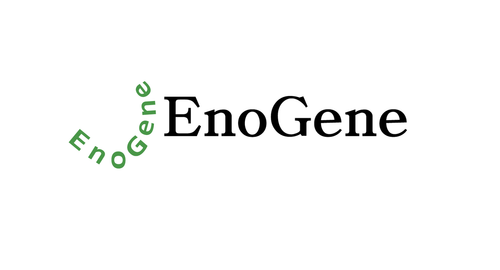Product Description
ACK1 Antibody (C-term) [APR05996G] | Leading Biology
Product Category: Polyclonal Antibodies
Host: Rabbit
Species Reactivity: H
Specificity: This ACK1 antibody is generated from rabbits immunized with a KLH conjugated synthetic peptide between 934-964 amino acids from the C-terminal region of human ACK1.
Cellular Localisation: Cell membrane. Nucleus. Endosome {ECO:0000250|UniProtKB:O54967} Cell junction, adherens junction. Cytoplasmic vesicle membrane; Peripheral membrane protein; Cytoplasmic side. Cytoplasmic vesicle, clathrin-coated vesicle Membrane, clathrin-coated pit. Cytoplasm, perinuclear region. Cytoplasm, cytosol {ECO:0000250|UniProtKB:O54967}. Note=The Tyr-284 phosphorylated form is found both in the membrane and nucleus (By similarity) . Co-localizes with EGFR on endosomes (PubMed:20333297) . Nuclear translocation is CDC42-dependent (By similarity) . Detected in long filamentous cytosolic structures where it co-localizes with CTPS1 (By similarity) {ECO:0000250|UniProtKB:O54967, ECO:0000269|PubMed:20333297}
Molecular Weight: 114569
Clone: Polyclonal
Gene Name: TNK2
Gene ID: 10188
Function: Non-receptor tyrosine-protein and serine/threonine-protein kinase that is implicated in cell spreading and migration, cell survival, cell growth and proliferation. Transduces extracellular signals to cytosolic and nuclear effectors. Phosphorylates AKT1, AR, MCF2, WASL and WWOX. Implicated in trafficking and clathrin-mediated endocytosis through binding to epidermal growth factor receptor (EGFR) and clathrin. Binds to both poly- and mono-ubiquitin and regulates ligand-induced degradation of EGFR, thereby contributing to the accumulation of EGFR at the limiting membrane of early endosomes. Downstream effector of CDC42 which mediates CDC42-dependent cell migration via phosphorylation of BCAR1. May be involved both in adult synaptic function and plasticity and in brain development. Activates AKT1 by phosphorylating it on 'Tyr-176'. Phosphorylates AR on 'Tyr-267' and 'Tyr-363' thereby promoting its recruitment to androgen-responsive enhancers (AREs) . Phosphorylates WWOX on 'Tyr-287'. Phosphorylates MCF2, thereby enhancing its activity as a guanine nucleotide exchange factor (GEF) toward Rho family proteins. Contributes to the control of AXL receptor levels. Confers metastatic properties on cancer cells and promotes tumor growth by negatively regulating tumor suppressor such as WWOX and positively regulating pro-survival factors such as AKT1 and AR. Phosphorylates WASP (PubMed:20110370) .
Summary: Tissue Location: The Tyr-284 phosphorylated form shows a significant increase in expression in breast cancers during the progressive stages i.e. normal to hyperplasia (ADH), ductal carcinoma in situ (DCIS), invasive ductal carcinoma (IDC) and lymph node metastatic (LNMM) stages. It also shows a significant increase in expression in prostate cancers during the progressive stages.
Form: Purified polyclonal antibody supplied in PBS with 0.09% (W/V) sodium azide. This antibody is purified through a protein A column, followed by peptide affinity purification.
Storage: Maintain refrigerated at 2-8°C for up to 2 weeks. For long term storage store at -20°C in small aliquots to prevent freeze-thaw cycles.
Application: IHC-P, WB
Dilution: WB--1:1000 IHC-P--1:100~500
Synonyms: Activated CDC42 kinase 1, ACK-1, Tyrosine kinase non-receptor protein 2, TNK2, ACK1
 Euro
Euro
 USD
USD
 British Pound
British Pound
 NULL
NULL

![ACK1 Antibody (C-term) [APR05996G] ACK1 Antibody (C-term) [APR05996G]](https://cdn11.bigcommerce.com/s-452hpg8iuh/images/stencil/1280x1280/products/868291/1160358/logo__92149.1659788186__52613.1659864315.png?c=2)
![ACK1 Antibody (C-term) [APR05996G] ACK1 Antibody (C-term) [APR05996G]](https://cdn11.bigcommerce.com/s-452hpg8iuh/images/stencil/100x100/products/868291/1160358/logo__92149.1659788186__52613.1659864315.png?c=2)
![ACK1 Antibody (C-term) [APR05996G] ACK1 Antibody (C-term) [APR05996G]](https://cdn11.bigcommerce.com/s-452hpg8iuh/images/stencil/500x659/products/868291/1160358/logo__92149.1659788186__52613.1659864315.png?c=2)








